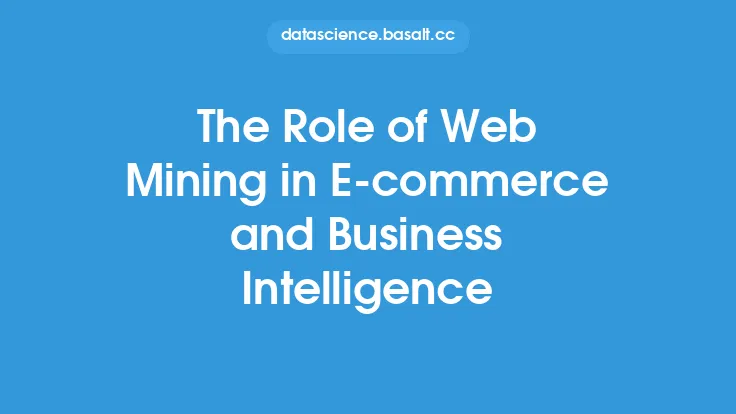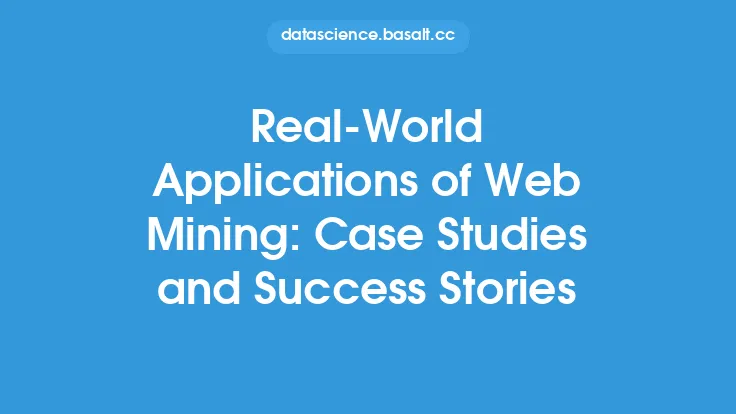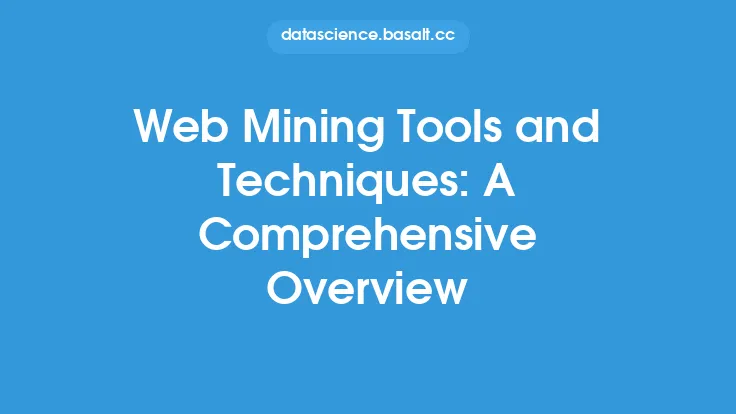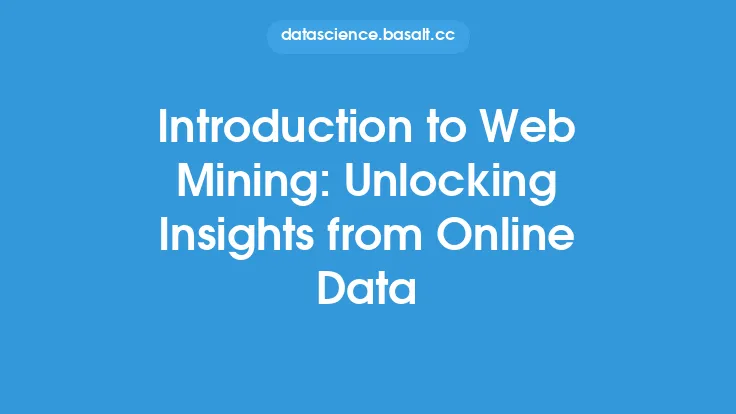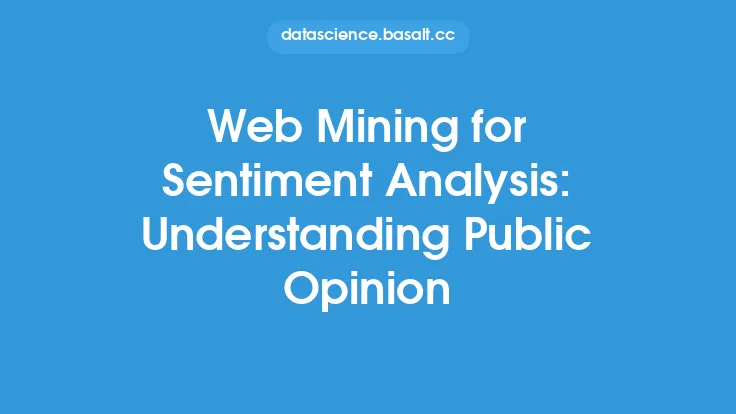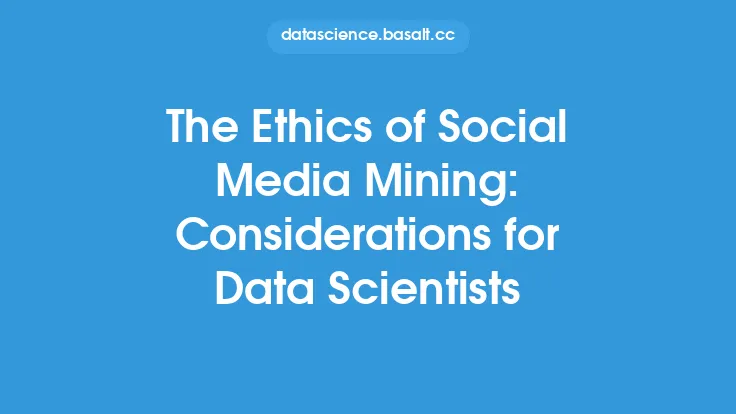The web has become an integral part of our daily lives, with millions of users interacting with it every day. As a result, a vast amount of data is generated, which can be used to understand user behavior, preferences, and interests. Web usage mining is a subfield of web mining that focuses on analyzing and extracting insights from web usage data, such as clickstream data, browsing history, and search queries. The goal of web usage mining is to discover patterns, trends, and relationships in user behavior, which can be used to improve web personalization, recommendation systems, and online marketing strategies.
Introduction to Web Usage Mining
Web usage mining involves the application of data mining techniques to web usage data to extract meaningful patterns and insights. The process typically involves three stages: data collection, data preprocessing, and pattern discovery. Data collection involves gathering web usage data from various sources, such as web server logs, browser history, and search engine queries. Data preprocessing involves cleaning, transforming, and formatting the data into a suitable format for analysis. Pattern discovery involves applying data mining techniques, such as clustering, classification, and association rule mining, to identify patterns and relationships in the data.
Types of Web Usage Data
There are several types of web usage data that can be used for web usage mining, including:
- Clickstream data: This refers to the sequence of clicks made by a user while browsing the web. Clickstream data can be used to analyze user navigation patterns, identify popular pages, and optimize website structure.
- Browsing history: This refers to the record of websites visited by a user over a period of time. Browsing history can be used to analyze user interests, identify trends, and recommend relevant content.
- Search queries: This refers to the keywords and phrases entered by users into search engines. Search queries can be used to analyze user intent, identify popular topics, and optimize search engine results.
Web Usage Mining Techniques
Several data mining techniques can be applied to web usage data, including:
- Clustering: This involves grouping similar users or web pages based on their characteristics, such as browsing behavior or content. Clustering can be used to identify user segments, recommend content, and optimize website personalization.
- Classification: This involves assigning a label or category to a user or web page based on their characteristics. Classification can be used to predict user behavior, identify trends, and optimize online marketing strategies.
- Association rule mining: This involves identifying relationships between different web pages or user behaviors. Association rule mining can be used to recommend content, optimize website structure, and identify trends.
Applications of Web Usage Mining
Web usage mining has several applications, including:
- Web personalization: This involves tailoring the web experience to individual users based on their behavior, preferences, and interests. Web usage mining can be used to recommend content, optimize website structure, and improve user engagement.
- Recommendation systems: This involves suggesting relevant content or products to users based on their behavior and preferences. Web usage mining can be used to build recommendation systems that provide personalized suggestions to users.
- Online marketing: This involves using web usage data to optimize online marketing strategies, such as targeted advertising and email marketing. Web usage mining can be used to identify trends, predict user behavior, and optimize marketing campaigns.
Challenges and Limitations
Web usage mining poses several challenges and limitations, including:
- Data quality: Web usage data can be noisy, incomplete, or biased, which can affect the accuracy of the results.
- Scalability: Web usage data can be massive, which can make it difficult to process and analyze.
- Privacy: Web usage mining raises privacy concerns, as it involves collecting and analyzing user data. It is essential to ensure that user data is collected and used in a responsible and ethical manner.
Future Directions
Web usage mining is a rapidly evolving field, with several future directions, including:
- Integration with other data sources: Web usage mining can be integrated with other data sources, such as social media and sensor data, to provide a more comprehensive understanding of user behavior.
- Real-time analysis: Web usage mining can be used to analyze user behavior in real-time, enabling organizations to respond quickly to changing user needs and preferences.
- Machine learning: Web usage mining can be used to build machine learning models that can predict user behavior, identify trends, and optimize online marketing strategies.
Conclusion
Web usage mining is a powerful tool for understanding user behavior on the web. By applying data mining techniques to web usage data, organizations can gain insights into user preferences, interests, and behavior, which can be used to improve web personalization, recommendation systems, and online marketing strategies. However, web usage mining poses several challenges and limitations, including data quality, scalability, and privacy concerns. As the field continues to evolve, it is essential to address these challenges and explore new directions, such as integration with other data sources, real-time analysis, and machine learning.
